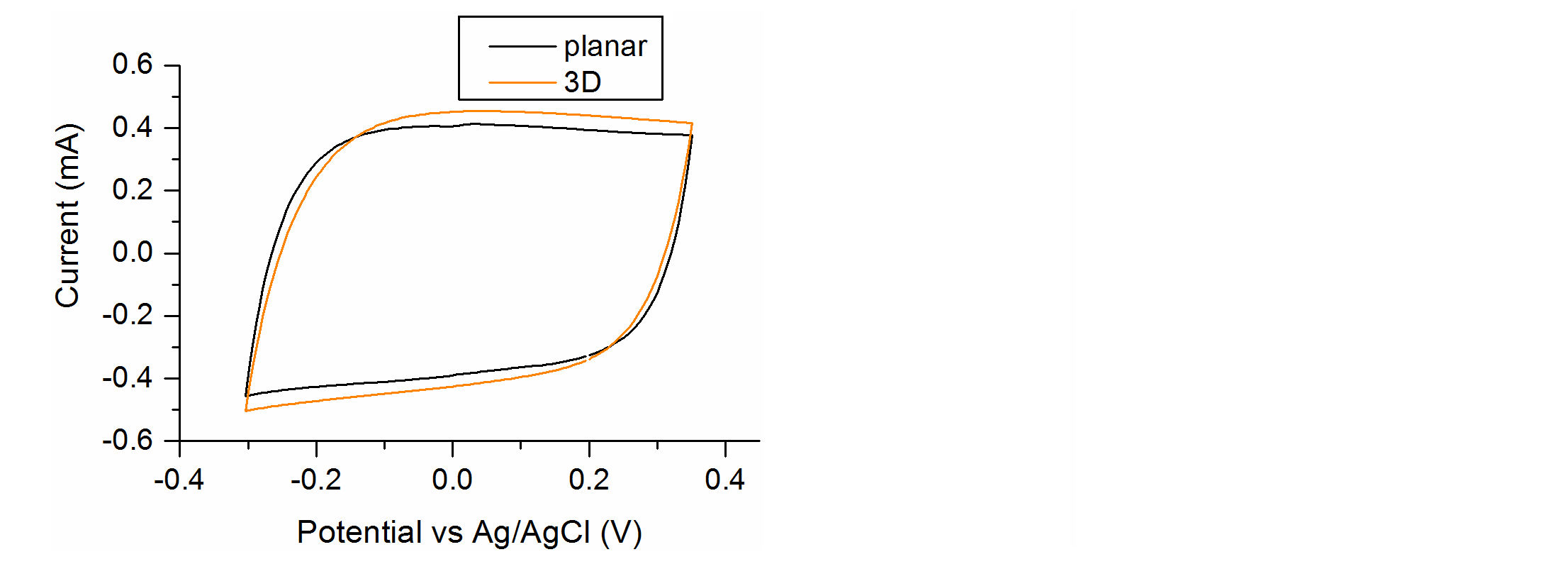Introduction: Early identification of pathogens is one of the main challenging clinical issue today to enhance patient care and to better control antibiotic use[1]. Currently, diagnosis is mainly based on microbiological culture of the body fluids. But this method is too long and the therapeutic decision frequently has to be done in phase advance with respect to microbiological results[1].
Recently, researchers became interested in detecting of electrochemically active molecules secreted by bacteria[2],[3]. Electrochemistry has several advantages: it allows quick and in situ analysis and is easy and cheap to integrate[4],[5]. Today, the main limitations in electrochemical bacteria detection is the sensitivity of the system, which is not good enough for quick detection in real conditions.
The herein work addresses this drawback by fabricating macroporous electrode as a matrix to bacteria growth (see Figure 1.). The aim is dual: expanding active surface to increase signal amplitude and enhancing the metabolites collection by bacteria confinement. Macroporous electrodes of the conductive-polymer poly(3,4-ethylenedioxythiophene):polystyrene sulfonate (PEDOT:PSS), known to be biocompatible[6], was made by freeze-drying.

Figure 1. Schematic view of the project detection tool
Materials and Methods: The macroporous electrode is obtained by freeze-drying aqueous dispersion of PEDOT:PSS PH1000 from CleviosTM with different proportions of (3-Glycidyloxypropyl)trimethoxysilane (GOPS) and Dodecylbenzenesulfonic acid (DBSA) as additives from Sigma-Aldrich.
SEM, conductivity by Transfer Length Method (TLM) test pattern and electrochemical studies were performed on the material.
Results and Discussion: Morphology: The obtained macroporous material looks like a soft dark blue foam (see Figure 2. a.). SEM observations show that pores are rather well-defined and well-organized (see Figure 2. b.). The electrodes exhibit typical pore size of 40 ± 10 µm that is much bigger than bacteria size (1-2µm). This size is supposed to be sufficiently large to allow bacteria growth inside the electrode and nutriments diffusion.

Figure 2. a. Picture, b. SEM image of the PEDOT:PSS macroporous electrode
Conductivity: Macroporous electrodes show good conductivity around 5.10-2 S/cm. This value allows electrochemical measurements.
Electrochemical analysis: Voltammograms obtained with cyclic voltammetry technics show that the macroporous electrode has a great electrochemical behavior (see Figure 3.). Capacitive current is similar between our 3D macroporous electrode and planar one with similar volume and composition. As PEDOT:PSS is known to have a volume capacitance, this result confirms that whole the 3D electrode is electrically connected.

Figure 3. Comparative cyclic voltammetry curves of planar and 3D PEDOT:PSS electrodes
Conclusion: We have successfully fabricated an electrochemically functional macroporous electrode on PEDOT:PSS. This electrode exhibits good morphology and electrochemical characteristics that meet all the requirements associated to our project. Microbiological tests, including test of bacteria colonization of the electrode, will be done in the near future.
The authors thank CEA and Ecole Nationale Supérieure des Mines de Saint-Etienne for their financial and research supports; This work is partially supported by the Labex ARCANE (ANR-11-LABX-0003-01)
References:
[1] Edwards, B. and I.M. Gould, Antimicrobial stewardship: lessons from human healthcare. Rev Sci Tech, 2012. 31(1): p. 135-44.
[2] Bukelman, O., et al., Electrochemical analysis of quorum sensing inhibition. Chemical Communications, 2009(20): p. 2836-2838.
[3] Oziat, J., et al. Electrochemistry Provides a Simple Way to Monitor Pseudomonas Aeruginosa Metabolites. in Engineering in Medicine and Biology Society (EMBC), 2015 Annual International Conference of the IEEE. 2015. Milan, Italy.
[4] Webster, T.A., et al., Improved monitoring of P. aeruginosa on agar plates. Analytical Methods, 2015. 7(17): p. 7150-7155.
[5] Bellin, D.L., et al., Integrated circuit-based electrochemical sensor for spatially resolved detection of redox-active metabolites in biofilms. Nature Communications, 2014. 5
[6] Asplund, M., et al., Toxicity evaluation of PEDOT/biomolecular composites intended for neural communication electrodes. Biomedical Materials, 2009. 4(4): p. 045009.